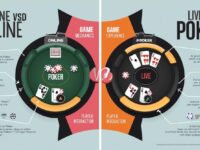In the dynamic world of poker, tournaments offer thrilling opportunities for players to demonstrate their skills and win significant prizes. Two popular formats dominate the scene: Sit & Go (S&G) tournaments and Multi-Table Tournaments (MTTs). Each format presents unique challenges and requires different strategies, making the choice between them pivotal for any aspiring poker player. This article delves into these two formats, comparing their structures, benefits, and strategic implications.
Exploring Poker Tournament Formats: Sit & Go vs MTT
Sit & Go tournaments, often abbreviated as S&G, are fast-paced and typically feature a limited number of players, ranging from two to ten. These tournaments start as soon as all seats are filled, providing an immediate and intense gaming experience. Players are attracted to S&G tournaments due to their straightforward nature and short duration, often lasting between 30 minutes to an hour. This format is perfect for those looking for a quick poker session without the commitment of a longer event.
On the other hand, Multi-Table Tournaments (MTTs) are larger events that can include hundreds or even thousands of participants. Unlike S&Gs, MTTs have scheduled start times and require a greater time investment, sometimes spanning several hours or even days. This format offers players the allure of substantial prize pools and the prestige of outlasting a vast field of competitors. The complexity and variability in MTTs provide a rich tapestry of strategic play, making it a favorite among seasoned poker enthusiasts.
Both formats demand a distinct set of skills and strategies. S&G players often need to excel in short-handed play and adapt quickly to changing blinds, as the compact structure accelerates the pace of the game. Conversely, MTT players must demonstrate endurance, patience, and the ability to navigate different phases of the tournament, from early tight play to the aggressive tactics often found near the money bubble. Understanding these differences is crucial for players aiming to optimize their tournament performance.
Making the Right Choice for Your Poker Strategy
Choosing between Sit & Go and Multi-Table Tournaments hinges on several factors, including time availability, risk tolerance, and personal skill set. For players with limited time or who prefer a quicker resolution, S&G tournaments are an ideal choice. These tournaments offer a controlled environment where players can focus on short-term strategy and adjust rapidly to changing conditions. Additionally, the smaller field size in S&Gs often means less variance and a more predictable outcome for skilled players.
In contrast, players with ample time and an appetite for high-risk, high-reward scenarios may find MTTs more appealing. The expansive field and deep stack structure of MTTs offer opportunities for larger payouts, but they also require a comprehensive long-term strategy and the ability to manage chip stacks effectively over extended periods. MTTs can be highly volatile, demanding resilience and mental fortitude to handle swings in fortune as the tournament progresses.
Ultimately, the choice between Sit & Go and MTTs should align with a player’s goals and strengths. New players might prefer starting with S&Gs to build foundational skills and confidence before tackling the more complex dynamics of MTTs. Conversely, experienced players seeking a significant challenge and the potential for life-changing winnings might gravitate towards MTTs. By evaluating personal preferences and strategic inclinations, players can make informed decisions that enhance their poker journey.
The decision to participate in Sit & Go or Multi-Table Tournaments is not just about preference but also about aligning with personal poker objectives and strategies. Both formats offer unique experiences, requiring players to adapt their approach according to the structure and demands of the tournament. Whether opting for the quick, intense nature of S&Gs or the strategic depth of MTTs, understanding the nuances of each format is essential for success. By carefully considering their skills, time constraints, and desired outcomes, players can navigate the poker tournament landscape with confidence and precision.



















0 Comments